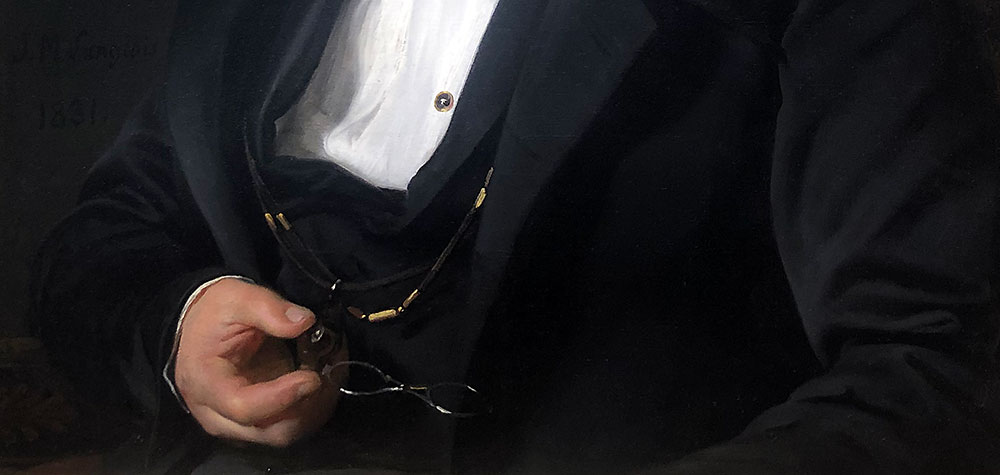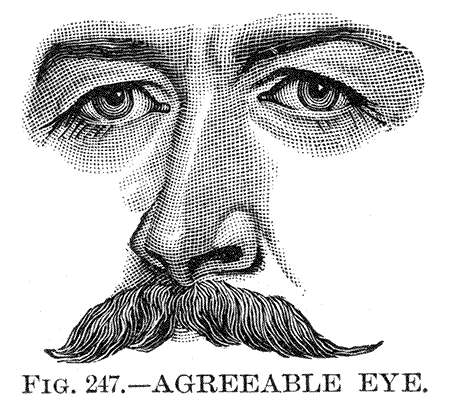amused

An arbitrary detail from ‘Portrait of the Comte De M.’ by Jérôme-Martin Langlois (1831).
Just last Tuesday, I ended up at the art museum, although I hadn’t intended to go. It was after going to the dentist, you see, and my jaw was sore from a filling and the right side of my face was in the hazy half-feeling state of waning local anesthetic. I had been working in a coffee shop, and saw there a person I’d rather not encounter. Such people exist for everyone, I think, and this person was there and we agreed amicably, tacitly, to give each other the cut direct, and that was for the best. So I went to art museum to find consolation for the day’s dismal double-dealing.
It is good to go repeatedly to museums. One becomes familiar with rooms, can appreciate their changes, and make new discoveries beyond the limits of one’s initial preferences. Why, on my previous visit but one, I encountered two portraits painted in 1831, though continents apart, that I had never thought to notice – the first of an American merchant (in a hazy style that Sargent would do better), with a suggested handsomeness, a suggested elegance that still conveyed a sense of new money or half-formedness, like a bear cub not yet licked into shape, and the second, a rather more detailed French Comte, whose petulant lip, black overcoat, and very shirt studs seem coated in the oil of privilege.
This particular visit, on the day of the dentist and the distasteful encounter, I was not in a humor to be pleased, but could see only faults: the lack of detail on the palm of a Madonna, which looked, between the gaps of her praying fingers, as though it were the cover of a book rather than the surface of a hand; the six-fingered hand on a Byzantine funerary monument from Syria; the poor draughtsmanship on several of the Greek vases, figures hasty squiggles rather than carefully formed, to say nothing of the poorly labelled vase that claimed the abduction of several females by satyrs was ‘a departure scene’; or the banal snapshots in an otherwise good exhibition of photographs by women. Still, it was a Tuesday and rather quiet, so it was easy enough to wander the halls and find isolated sofas in front of large canvases to sulk on and at, respectively.
I felt much better when I left and could pick up my library holds with something approaching equanimity, which I credit to the elevating power of art.
